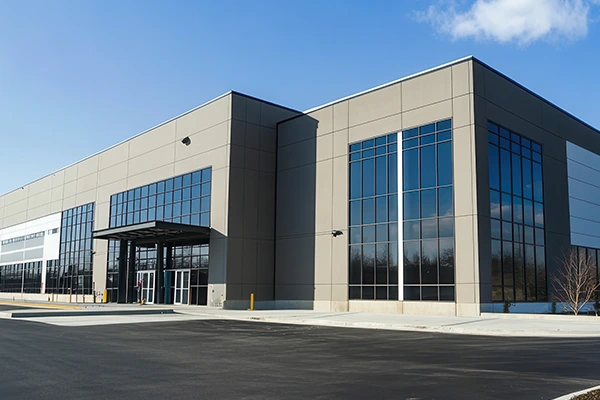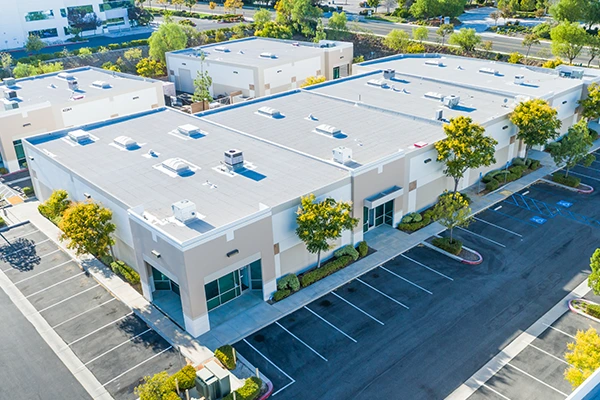
Managing a commercial facility often feels like juggling a dozen balls in the air, especially when it comes to coordinating various vendors for roofing, flooring and painting. Let’s face it, this can quickly turn into a complex maze! But what if you could simplify the process?

As winter approaches, it's time to prepare for the unique challenges that this season brings. Freezing temperatures, snow accumulation and thermal shock are a triple threat that puts serious strain on your most vital facility asset: your commercial roof. The big question isn't if it will snow, but how you will outsmart the weight to keep your building safe, sound and operational.

Time flies, right? Hard to believe it’s already time to start planning for 2026. As you build next year’s facility budget, make sure you’re not overlooking a few critical areas that directly impact safety, efficiency and compliance: your facility's roof, floors and parking or access areas.

As 2025 comes to a close, many facility and operations managers are faced with a familiar challenge: what to do with remaining maintenance dollars before they vanish from the budget. If you don’t use them, you’ll lose them. This is a great opportunity to make smart, strategic roofing investments that protect your building, reduce long-term costs and set you up for success in 2026.

Each year, tornadoes, hailstorms and hurricanes bring some serious damage to all types of commercial properties across North America. Severe weather has surged even earlier this summer and 2025 is shaping up to be one of the most intense years for heavy rain and high winds. It’s time to turn your attention toward your commercial roof now more than ever. From hail and tornado resistant systems to proper installation techniques and changes in insurance coverage, this year is one for the books. We’re here to help you understand your roofing risks and prepare for what the future holds.

Summer is right around the corner and it’s bringing more than sunshine. We’re talking about scorching UV exposure, sudden summer storms and a surge of guests making their way into hospitality and retail facilities across the country. This means that there’s zero room for downtime and a failing roof can hinder your operations during the busiest season of the year. Here’s the top three industries that will be affected and what their roofing priorities should be:

As the school year winds down, now is the time to start thinking about summer maintenance and one area that should never be overlooked is your roof. From small private schools to large college campuses, educational institutions tend to quiet down significantly over the summer break. That makes it the perfect window to tackle roof maintenance, repairs or even full replacements without disrupting classes.

Managing large-scale commercial construction projects presents a number of challenges, particularly when it comes to coordinating multiple vendors for roofing, flooring and painting. The complexity of these projects often leads to misalignments in schedules and quality control. That’s where CentiMark Corporation comes into play. We offer a fully integrated solution through our dedicated new construction divisions, streamlining roofing, flooring and painting services under one roof. This approach simplifies coordination, improves safety, improves quality assurance and keeps your project on track.

If you’ve been waiting for the “right time” to tackle those long-overdue roof repairs or finally take a look into into a full replacement - now is the time. Spring and summer aren’t just warmer months, they’re peak roofing season. Essentially, this season is the perfect window of opportunity to prepare your business for the long winter ahead.

Spring is here and the roofing season is about to kick into full gear. As we already know, this year may bring some challenges, including labor shortages and potential cost increases due to inflation, raw material price fluctuations and tariffs. Whether you need roof repairs, a full reroof or are in charge of a new construction project and looking at your roofing options, planning ahead is critical to maximizing your budget and meeting deadlines.

The start of a new year is the perfect time to assess your facility’s operational costs and identify areas for improvement. As someone in charge of a commercial facility, optimizing these costs is a daily responsibility. If you want to minimize expenses and ensure safety and compliance to avoid interruptions in your operations, pay special attention to your roof, the largest part of your building envelope. Let’s explore how the condition of your roof may affect your overall operations and develop an action plan together.

With the new year underway, significant changes are occurring in the commercial roofing industry. We aim to help you navigate these challenges and provide a smooth commercial roofing experience this year. Let's take a moment to examine what to expect and how to address it.

When managing a commercial property, you have numerous responsibilities, including budgeting, compliance and operations. As you know, optimizing or automating certain tasks can significantly improve your workflow and reduce blind spots. But can these principles be applied to your facility's roof? Can you efficiently manage multiple roofs at the same time? The answer is yes. Technology and automation tools in commercial roofing can greatly reduce the time spent on roof management while ensuring that your buildings remain watertight and safe. Let’s explore some tools that can make your life a bit easier.

Ready to learn about all things FM Global? This organization focuses on commercial and industrial property insurance, with an emphasis on risk prevention. Their insurance policies typically have strict safety-focused requirements for fireproofing, wind resistance and other features. If you have FM Global insurance or are considering working with them, understanding their requirements is crucial for your roofing project to safeguard your building. This article will be your guide on all things FM Global by giving you the inside scoop on what it’s like working with them.

Are we ready for cooler temperatures and pumpkin spice? Fall is almost here, along with shorter days, falling leaves and precipitation. Depending on your location, your facility may be dealing with a significant increase in rooftop debris, cold rain showers and even snow. We have created a three-step to-do list to help you prepare your building(s) for the change of season!

As you may already know, a thorough inspection of your commercial roof that identifies any issues, including those that may not be noticeable to the naked eye, is a crucial first step in keeping your building watertight (or vapor-tight if applicable for your industry). But what does it entail exactly? In this article, we discuss commercial roof management with our industry veterans with over 20 years of experience: Don Lyter, Director of Service, Global Accounts and Jakub Darling, Western Group Service Director. Today, we'll shed more light on that first foundational step to understanding what's lurking above your head: comprehensive commercial roof inspections.

Working on your 2025 budget? Roof leaks can significantly disrupt your facility's operations, harm valuable equipment, inventory and personal property. Water intrusion can even jeopardize the well-being and safety of everyone in the building. As you draft your budget for the upcoming year, consider giving your roof a well-deserved spot. Let's look into a few factors that may cause unexpected expenses related to roofing and what you can do as a facility manager or business owner to minimize your risk.

Ready to dive into the roofing challenges and best practices of cold storage facilities? Today’s article gives you some pro tips on ensuring durability, efficiency and cost-efficiency in cold storage roofing.

Get ready to take a deep dive into R-value and energy studies for commercial buildings! Familiarizing yourself with the energy use of your facility will provide you with endless benefits. In this interview, our very own industry experts explain how energy studies guide the development of tailored roofing solutions for commercial buildings that optimize cost savings, energy efficiency and a healthier workplace environment.
It can be challenging to keep a close eye on the condition of your facility's roof. Often, it's a case of "out of sight, out of mind" until a leak disrupts your operations. When you are in charge of multiple buildings, things get even more complex. You may be facing drastically different climates or building codes and often have to work with different local roofing contractors. This could bring inconsistency in results and standards, as well as overcomplicated logistics associated with managing multiple vendors. How can you simplify and streamline this process? To find answers, we asked a few commercial roofing industry veterans with decades of experience in both regional and nationwide roofing portfolio management.
Introducing our expert panel for today! We are delighted to have with us the following CentiMark associates: Don Lyter, Director of Service, Global Accounts; Jakub Darling, Western Group Service Director; Steve Houck, National Account Manager; and Christopher Sellers, Southern Group VP of Sales. Get ready for an insightful session with these industry leaders!
We use cookies to improve your experience on our website. By clicking "I accept" or continuing to use our site, you consent to the use of cookies unless you have disabled them. Learn more here: Privacy Policy and CCPA.
